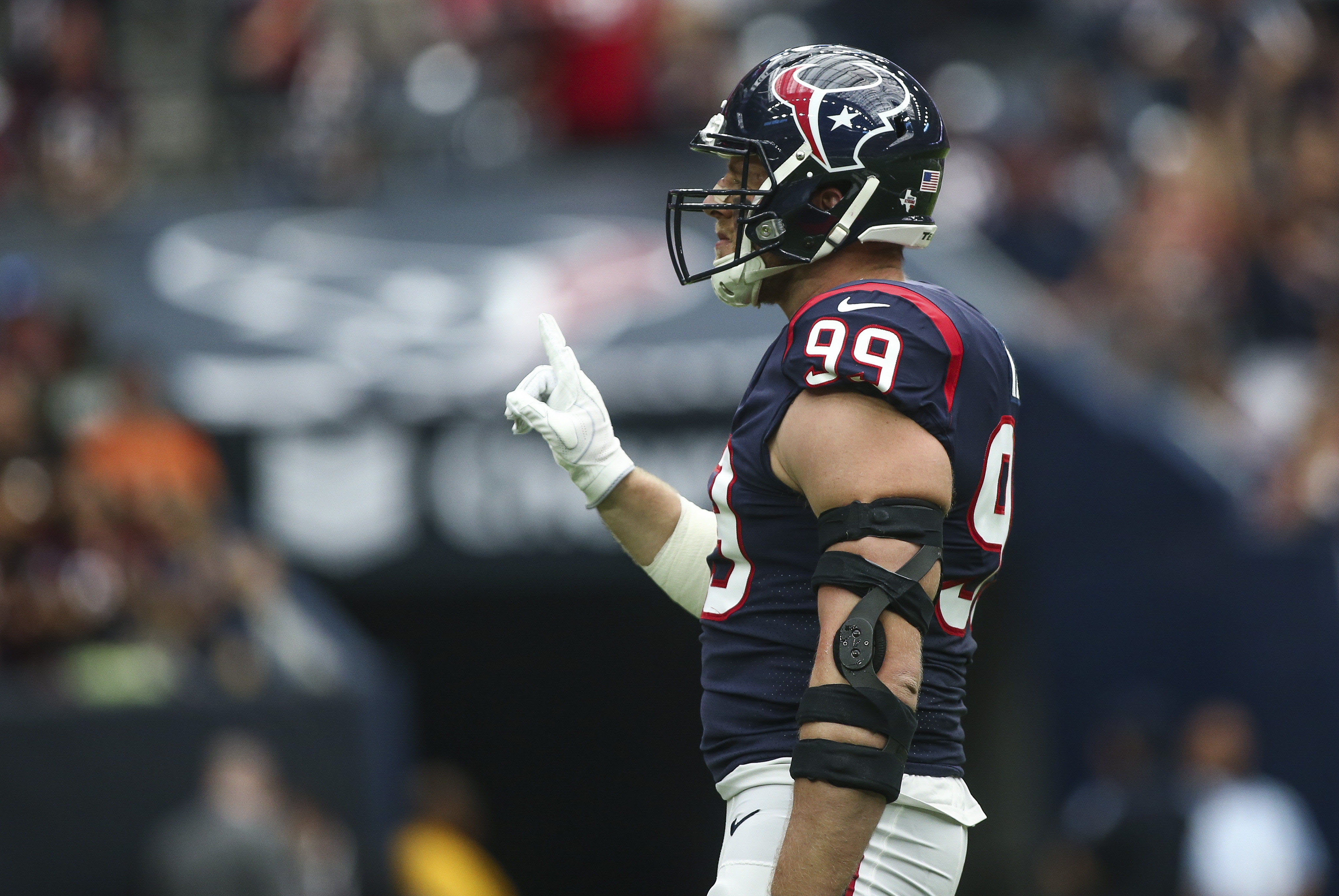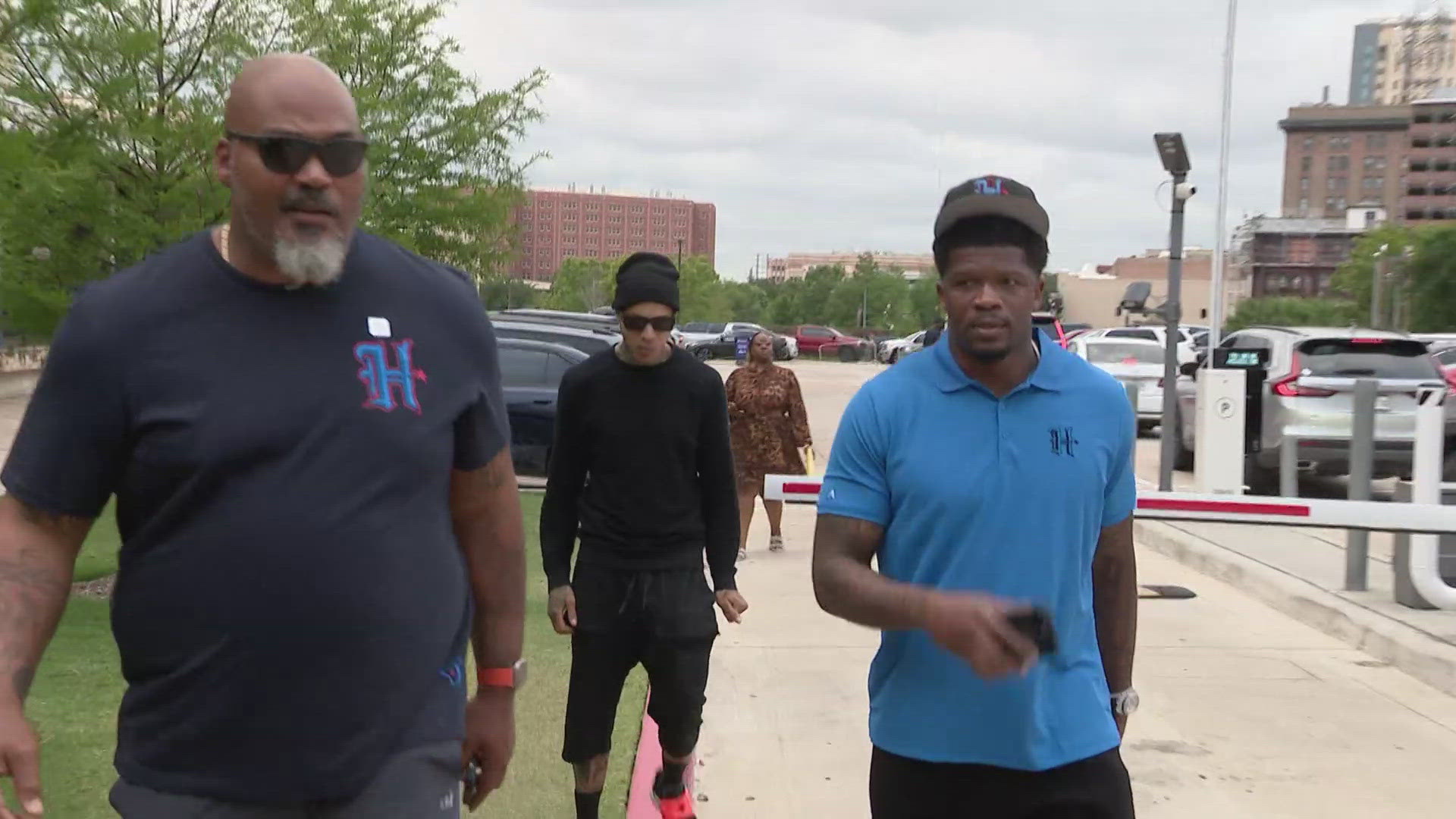With Mike Vrabel possibly departing the team for a head coaching job, the Houston Texans may well be looking for a new defensive coordinator.
Vrabel’s predecessor Romeo Crennel is rumored to be retaking the reigns after his promotion to assistant head coach last year, and his 2016 defense was an elite unit.
But if the team does choose to look outside the organization, could they look to move away from the 3-4 that has become so familiar since J.J. Watt’s arrival, and install a base 4-3 defense? The Texans already utilize a number of 4-3 looks, and regularly use nickel packages with four down linemen to maximize pass-rushing potential. As such, the existing personnel should be relatively comfortable in the scheme.
Houston has the players to excel in a 4-3 Over Front:
Linebackers
To run a successful 4-3 defense the linebackers have to be smart and athletic. The Jacksonville Jaguars’ front seven was perhaps the most dominant unit in football this season, and the consistently strong play of Paul Posluszny, Myles Jack and Telvin Smith were crucial in allowing the defensive linemen to thrive in front of them.
In previous seasons this is where the Houston would have struggled, but the emergence of rookies Dylan Cole and Zach Cunningham leaves the team with three promising and capable linebackers. Benardrick McKinney continued his growth into a leader in the middle of the defense, and an extended and improved deal likely awaits. Cole, Cunningham and McKinney are three players the team should look to have on the field as often as possible, and thus being able to deploy the trio together is an attractive prospect.
In terms of alignment, McKinney is a natural fit as the middle (MIKE) linebacker. Strong, tall, physical and smart, he keys well on runs plays and is an effective tackler. His deficiencies in man-to-man pass coverage are well-known, but he is able to drop into his zone relatively well, and a move to a 4-3 would perhaps suit his game.
Sign up for the Texans Wire email newsletter to get our top stories in your inbox every morning
Cunningham would likely be utilised as a weak-side (WILL) linebacker. Lanky and athletic, he improved as a coverman throughout his rookie year and has the raw skills needed to thrive in this facet in the future. The Vanderbilt product would fit well in an attacking 4-3, pursuing running backs across the field and being a key coverage cog.
Cole would therefore be stationed on the strong-side, as a SAM linebacker. The undrafted gem is athletic and carries a strong, muscular frame extremely well. He is a stout run defender with excellent understanding of gap integrity. Cole’s reliability in man coverage was a pleasant surprise as a rookie, and he would be an excellent fit in this role, covering tight ends and running backs out of the backfield.
Defensive line
Perhaps the best reason for moving to a 4-3 is the potential of the Texans’ star pass-rushing triumvirate in the new scheme. Injury robbed J.J. Watt and Whitney Mercilus of much of the 2017 season, but Jadeveon Clowney continued to evolve into a top-tier NFL edge defender. When the trio was all healthy at the beginning of the year, Mike Vrabel struggled to use them effectively, particularly on pass-rushing downs.
In a 4-3 Over, Mercilus and Clowney would line up as the wide defensive ends, with Clowney on the strong side lined up just outside the tight end and Mercilus on the weak-side. Mercilus played as a weak-side end at Illinois and has the speed and technique to excel at the position in the NFL. Furthermore, he is an excellent technical run defender and sets the edge consistently.
Clowney’s remarkable physical gifts means he could play at either spot, but his skill in splitting double teams and bursting into the backfield against the run allows him to be a truly impactful strongside end.
Inside, Watt could operate as the ‘Over’ three-technique defensive tackle in partnership with the underrated D.J. Reader on the nose. Reader eats blockers and holds strong against double teams, which would isolate Watt with a guard. Watt was exceptional early in his career pass-rushing from the edge, but struggled somewhat after back surgery last year. Moving him inside on a more regular basis is a good move, reducing the chance of further injury and allowing his quickness to overwhelm weaker interior linemen, both against the run and when getting after the quarterback.
In addition to the starting four, the Texans already possess a number of rotational pieces that fit well as defensive linemen in a 4-3 Over. Carlos Watkins played the majority of his senior year in a 4-3 Over at Clemson, working as a three-technique extremely effectively. He and Christian Covington have the pass-rushing ability to rotate behind Watt at the position, while Brandon Dunn can do the same at Nose Tackle.
Recruitment
The Texans have the personnel to run an effective starting 4-3 Over, but in the NFL it is crucial to have as many impactful front seven players as possible. Their depth on the interior is fine, but if Houston does choose to hire a coordinator who prefers a 4-3, they will have to add players who better suit the scheme at defensive end and linebacker to rotate in and cover for potential injuries. On the edge, they would likely target a speedier, bendier rusher who can support Mercilus on the weak side and provide impact from the bench. Brennan Scarlett played defensive end in a 3-4 at Stanford and has the size and strength to adequately backup Clowney.
Brian Cushing starred at outside linebacker in a 4-3 in his rookie year, earning Pro Bowl honors and winning the NFL Defensive Rookie of the Year award. But he has since suffered two major injuries, and his play has deteriorated somewhat, and it is unlikely he could play outside in the system now. The Texans would save a significant amount of money by cutting him this offseason. Should Houston move to a 4-3 defense, recruiting athletic outside linebackers either via free agency or in the draft would become a priority.


